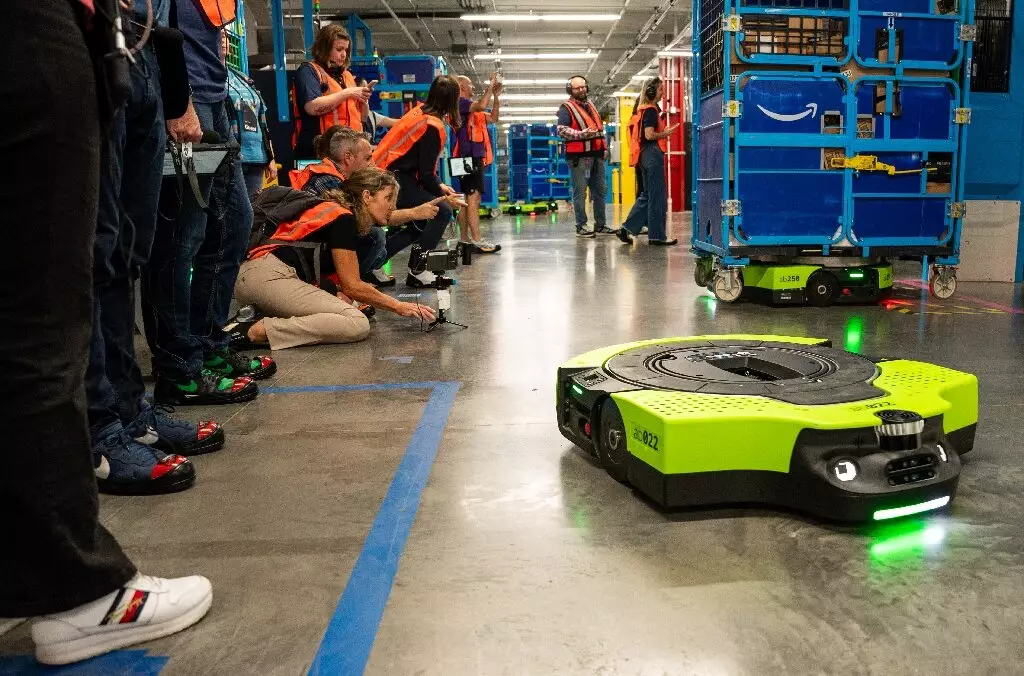Amazon has firmly established itself as a dominant force in e-commerce and beyond. As it traverses a path that delves deeper into various sectors of daily life, including technology, healthcare, and entertainment, the company continues to unveil innovations that underscore its commitment to speed and efficiency. This article analyzes Amazon’s recent developments, the multifaceted nature of its business model, the implications of its expansion, and the critiques it faces along the way.
At the core of Amazon’s operational strategy lies an increasingly sophisticated logistics network designed to enhance delivery speed, a focal point for customer satisfaction. Recently, Doug Herrington, head of Amazon Stores, introduced a computer system for delivery vans that streamlines route recognition and package sorting. This technological advancement is a reflection of Amazon’s relentless pursuit to reduce delivery times, which Herrington claims directly correlates with increased shopping frequency among consumers.
As 2024 approaches, Amazon is positioning itself to boast the most rapid Prime delivery services globally. Last year, a noteworthy reduction of 45 cents in shipping costs per unit shipped was reported, highlighting the efficiency gains that are particularly significant given the sheer volume of items Amazon processes daily. With a staggering $575 billion in revenue and over $30 billion in profits, the effectiveness of its logistics strategy not only optimizes operational costs but significantly enhances consumer experience.
Central to Amazon’s expansive strategy is its subscription service, Amazon Prime, which acts as a binding agent across various business segments, including retail, advertising, cloud computing, and entertainment. According to analyst Suzy Davidkhanian, this “flywheel” model ensures that membership drives consumption across these diverse platforms. Amazon’s investment in data analytics powers its advertising strategy, allowing for targeted promotions tailored to consumer preferences.
This holistic approach also extends to Amazon’s foray into streaming rights, such as securing NFL games on Prime Video, positioning itself to tap into a vast audience of sports enthusiasts. The confluence of data-driven marketing with diverse business offerings exemplifies Amazon’s adaptability and ambition to become an indispensable player in various sectors.
In a bid to dominate the healthcare landscape, Amazon has made significant strides, particularly through its One Medical service. By offering Prime members access to healthcare professionals for $9 a month, Amazon aims to redefine patient engagement through video consultations. Furthermore, the integration of Amazon Pharmacy into its logistics framework promises to advocate for rapid delivery of prescriptions, with a goal to deliver within 24 hours for nearly half of its customers.
Hannah McClellan, head of Amazon Pharmacy, alludes to the concept of a “pharmacy in your pocket,” a reflection of Amazon’s desire to create a seamless, technology-driven healthcare experience. This venture into healthcare highlights Amazon’s intention to diversify its service offerings while catering to consumer needs in an increasingly digital world.
Despite its ambitious projects, Amazon is not without its challenges. The company is presently facing a lawsuit from the U.S. government, alleging monopolistic practices that stifle competition. Critics argue that Amazon’s dominance raises questions about fair market practices. The company’s relentless drive for efficiency often brings criticism regarding worker safety, particularly in its warehouses, where injuries reportedly exceed the industry average.
As automation becomes increasingly integral to Amazon’s logistics, with robotics streamlining operations, concerns remain about the pressure this places on human workers. Julie Mitchell, a manager in Amazon robotics, argues that automation enhances safety and liberates employees from monotonous tasks, yet this contrast with outside critiques reveals an intricate balance of human interest versus fully mechanized operations.
Amazon’s trajectory illustrates a complicated yet fascinating narrative of a tech giant striving to enhance human experience while simultaneously navigating the pitfalls of its colossal influence. As the company pushes forward with innovations in delivery, healthcare, and artificial intelligence, it is also encumbered by legal challenges and ethical debates that question its overarching practices. The future holds the promise of continued expansion into more aspects of everyday life, but whether this expansion can be managed responsibly remains to be seen. The ongoing story of Amazon is not just about technological advancement; it is also a reflection of the ethical dilemmas posed by its business practices and the societal impact of its growth.


Leave a Reply